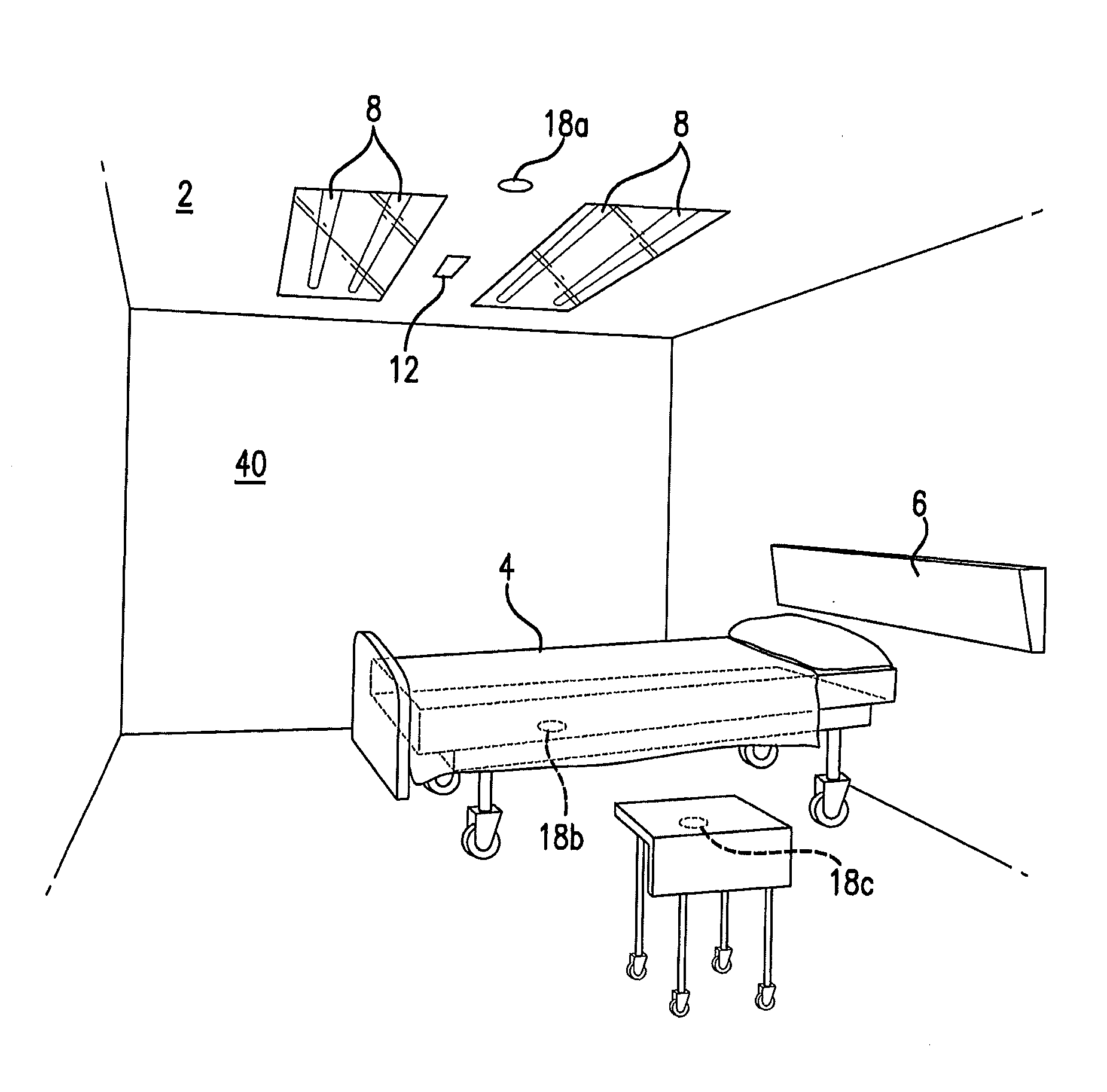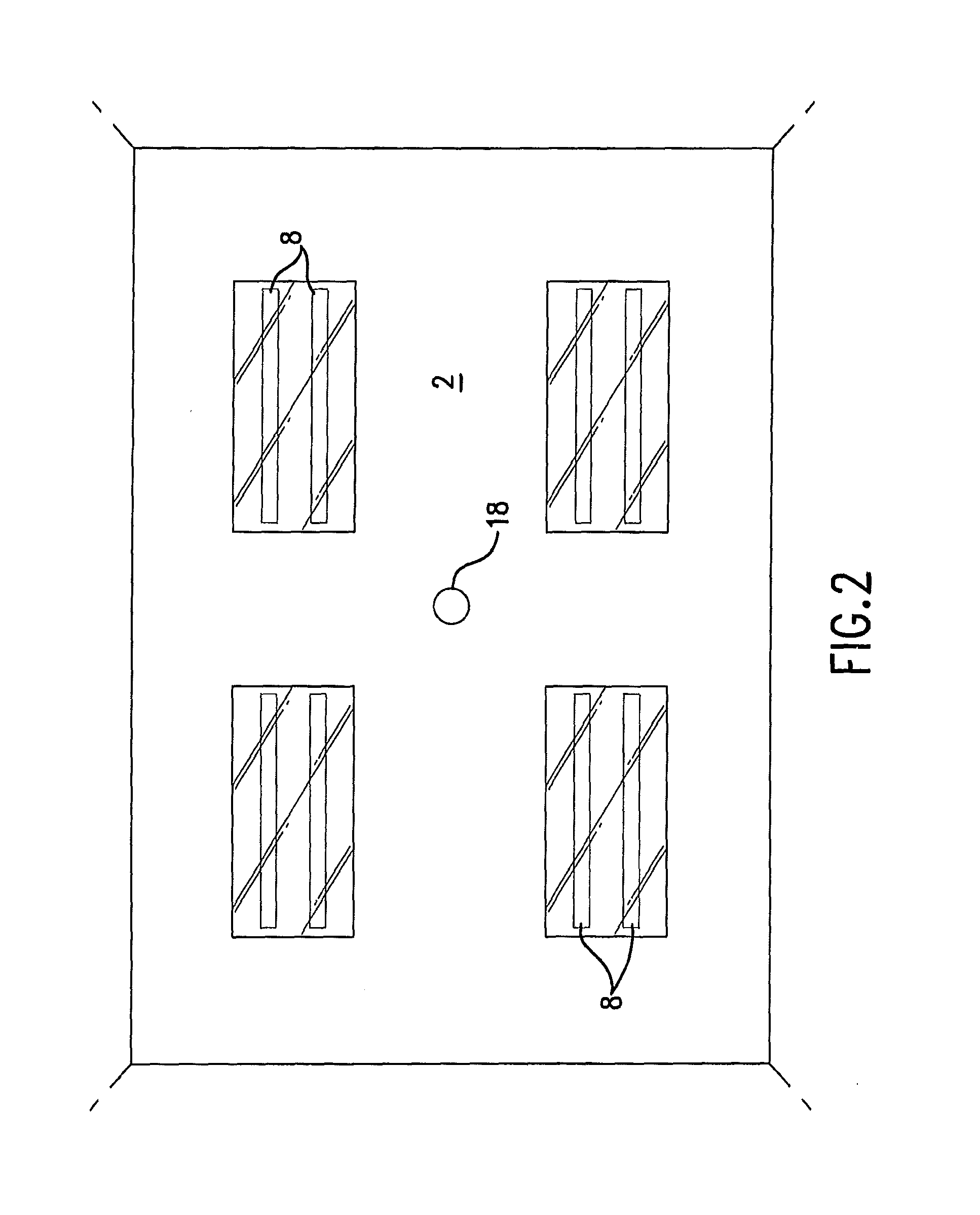Disinfection device and method
a disinfection device and disinfection technology, applied in the field of disinfection devices and methods for bacterial, fungal and/or viral sterilization and disinfection, can solve the problems of high cost, lethal, and common infections, and the renovation of aging hospitals increases and the infection is common and hospital acquired. , the effect of increasing the risk of airborne fungal and other infections
- Summary
- Abstract
- Description
- Claims
- Application Information
AI Technical Summary
Problems solved by technology
Method used
Image
Examples
Embodiment Construction
[0018]The examples given in the discussion of preferred embodiments are fixtures to buildings or rooms to buildings. However, the elements of the device as described herein may also be incorporated in a mobile device that is portable, as described in Deal, U.S. Pat. No. 6,656,424. The power allocation device and method as described herein is useful with fixed and portable devices and methods of ultraviolet-C (UVC) disinfection.
[0019]Referring now to the drawing figures, banks of UV-C emitting bulbs 8 are positioned in an architectural partition, which could be a wall, but may be a ceiling 2 of the enclosed area. The enclosed area may be a room located in a building. FIG. 1.
[0020]In one embodiment, four (4) pairs of medium pressure mercury bulbs may be present in a fixture that is located in a ceiling of a room. FIG. 2. The bulbs may be 48-inch long, 115-Watt UV-C generating lamps or bulbs that produce 300 microwatts of ultraviolet radiation at 1 meter. Other effective UV-C generator...
PUM
| Property | Measurement | Unit |
|---|---|---|
| angle | aaaaa | aaaaa |
| angle | aaaaa | aaaaa |
| area | aaaaa | aaaaa |
Abstract
Description
Claims
Application Information
 Login to View More
Login to View More - R&D
- Intellectual Property
- Life Sciences
- Materials
- Tech Scout
- Unparalleled Data Quality
- Higher Quality Content
- 60% Fewer Hallucinations
Browse by: Latest US Patents, China's latest patents, Technical Efficacy Thesaurus, Application Domain, Technology Topic, Popular Technical Reports.
© 2025 PatSnap. All rights reserved.Legal|Privacy policy|Modern Slavery Act Transparency Statement|Sitemap|About US| Contact US: help@patsnap.com



